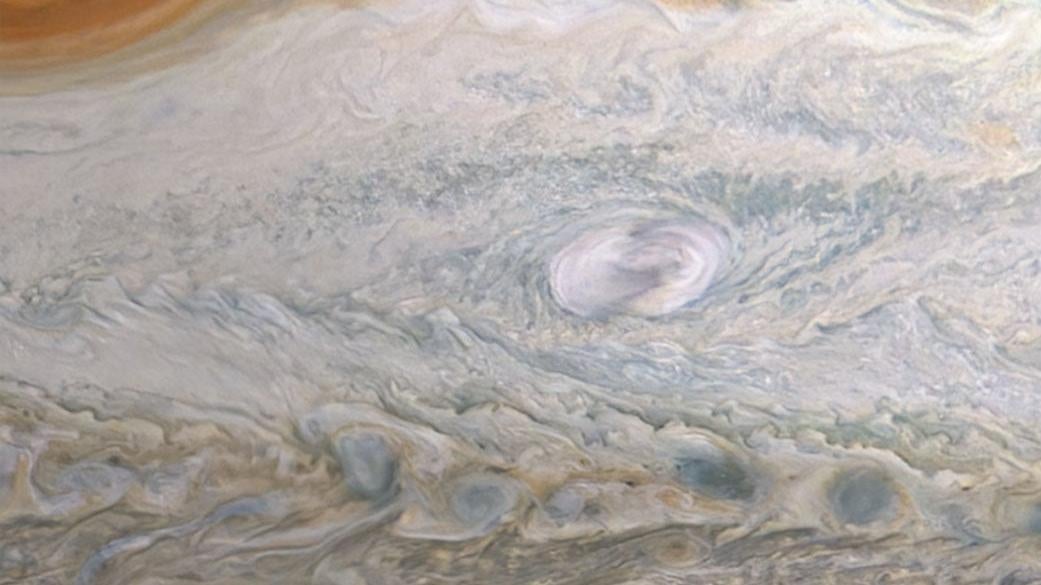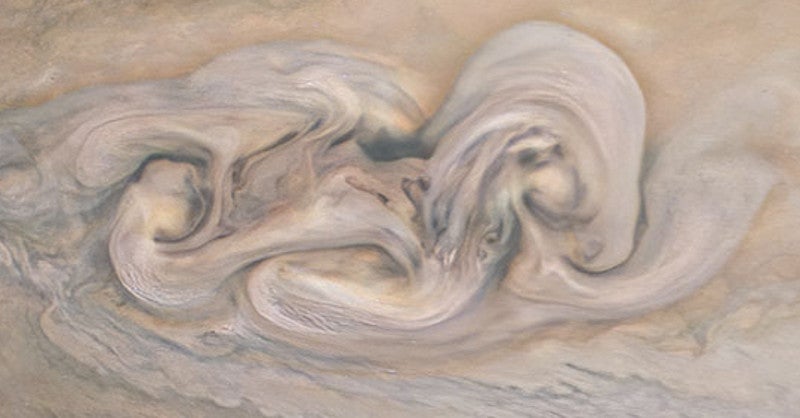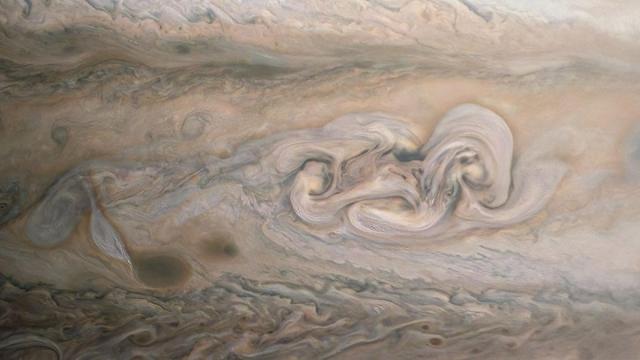Last May, a spot suddenly appeared in Jupiter’s southern hemisphere. But as new images from the Juno spacecraft show, the once circular feature has morphed into an enigmatic splotch.
The feature was first detected by Clyde Foster, director of the Shallow Sky section of the Astronomical Society of Southern Africa, on May 31, 2020. Foster spotted the spot using his own 14-inch telescope, and, quite fortuitously, NASA’s Juno probe made a close approach two days later, allowing for a close-up view of the new feature.
Clyde’s Spot, as it’s informally known, is a convective outbreak — a plume of cloud that’s reaching out beyond the regular cloud tops — and is located to the southeast of Jupiter’s Great Red Spot. Such outbreaks are not uncommon within the gas giant’s South Temperate Belt.

On April 15, 2021, Juno performed its 33rd perijove (close flyby) of Jupiter, during which time it captured a new view of Clyde’s Spot — or, at least what used to be Clyde’s Spot. The new image was taken when the spacecraft was 27,000 kilometres above Jupiter’s cloud tops. Citizen scientist Kevin M. Gill processed the image from raw JunoCam data, according to NASA.
The updated view reminds us to not get attached to the beautiful shapes and colours that appear on Jupiter, as many of them are short lived. In the year since it was discovered, Clyde’s Spot has drifted away from the Great Red Spot and morphed into something that wouldn’t look out of place in a puddle on a gas station parking lot.

Such splotches have a technical term: folded filamentary regions. And as NASA points out in a statement, this feature is “twice as big in latitude and three times as big in longitude as the original spot, and has the potential to persist for an extended period of time.”
From here, the feature will get increasingly ambiguous and eventually fade from view. Clyde’s Spot will be no more, and a new one will inevitably pop up to replace it. It’s the way of things on Jupiter, where its restless atmosphere is constantly swirling and roiling.
